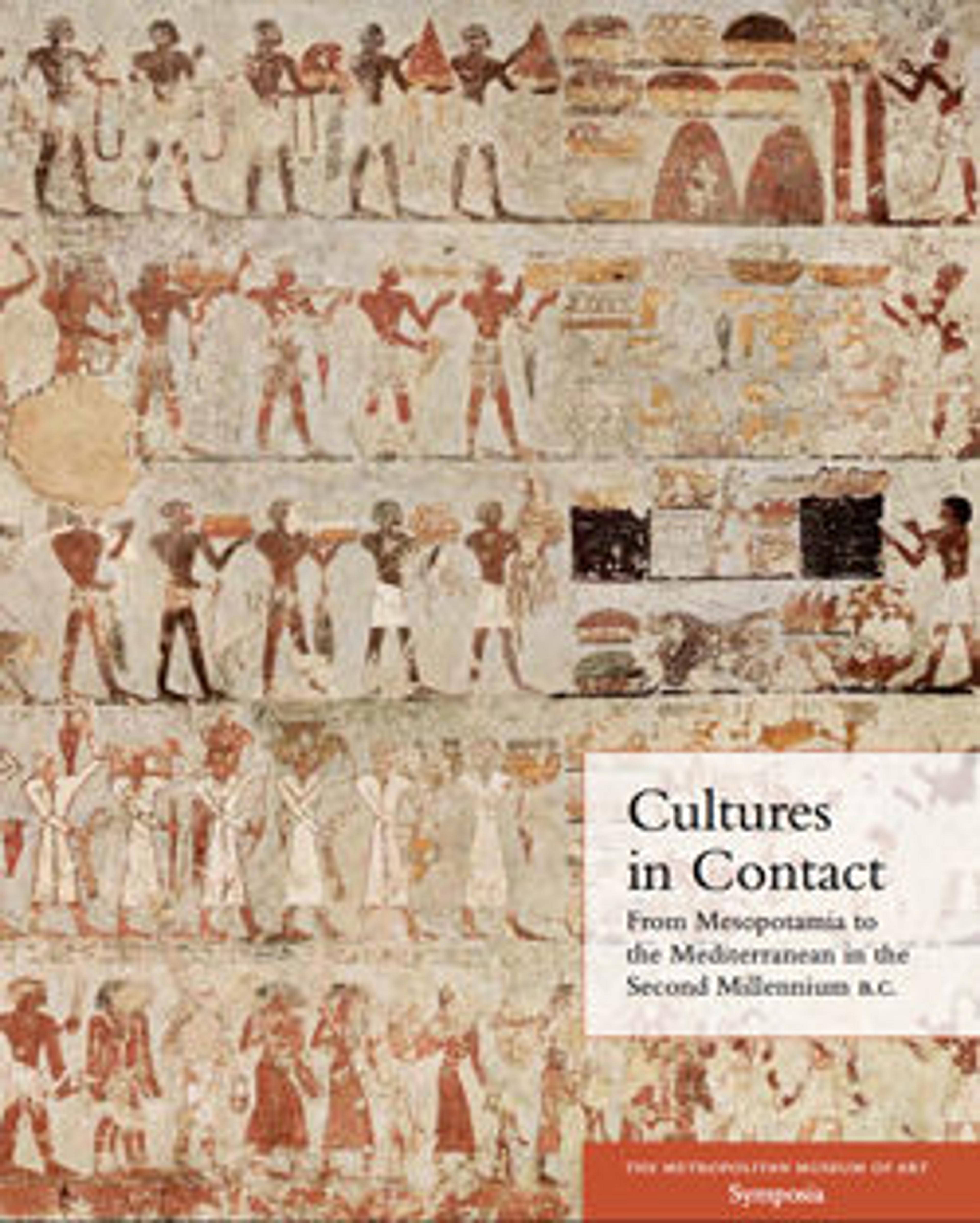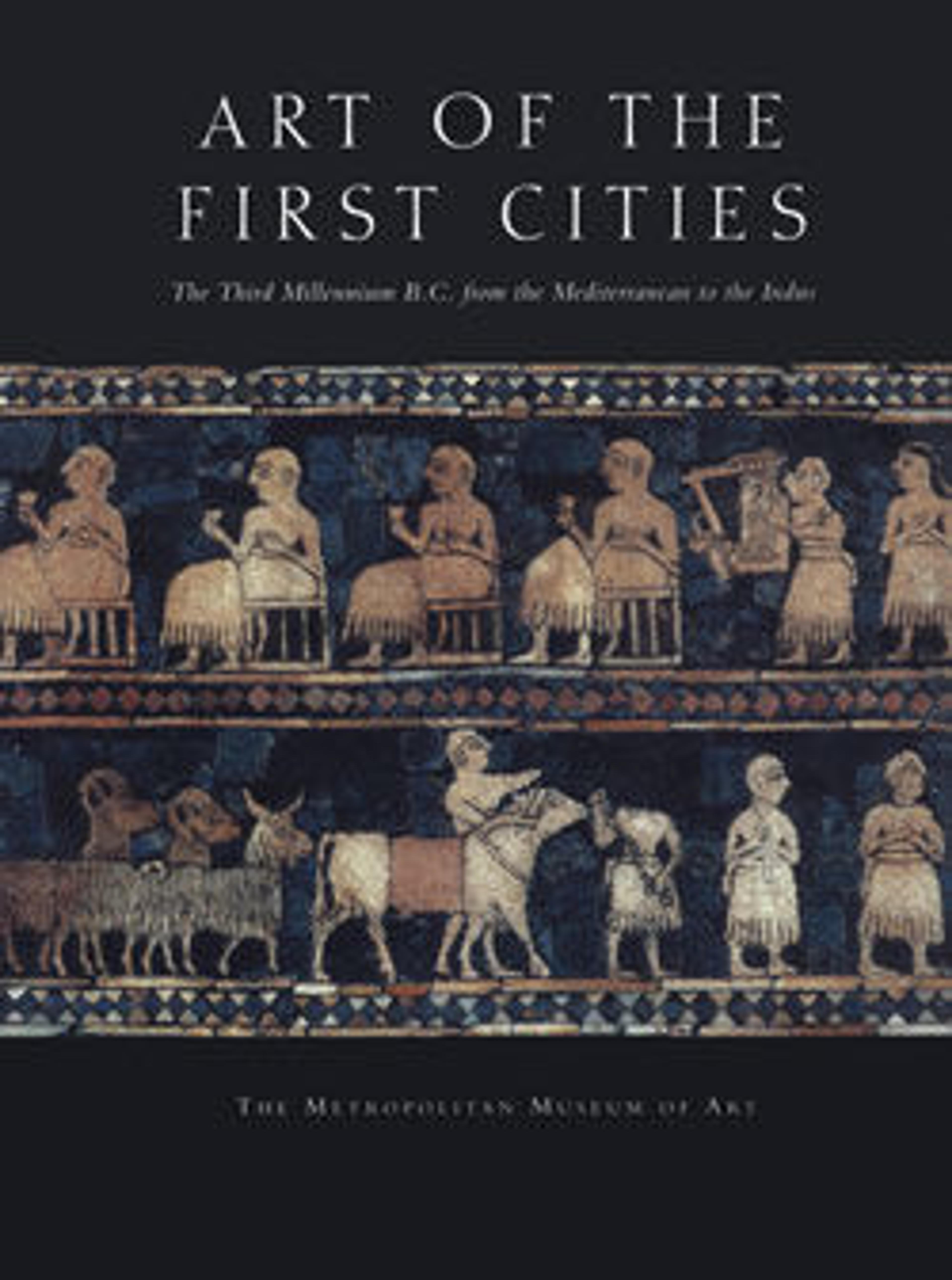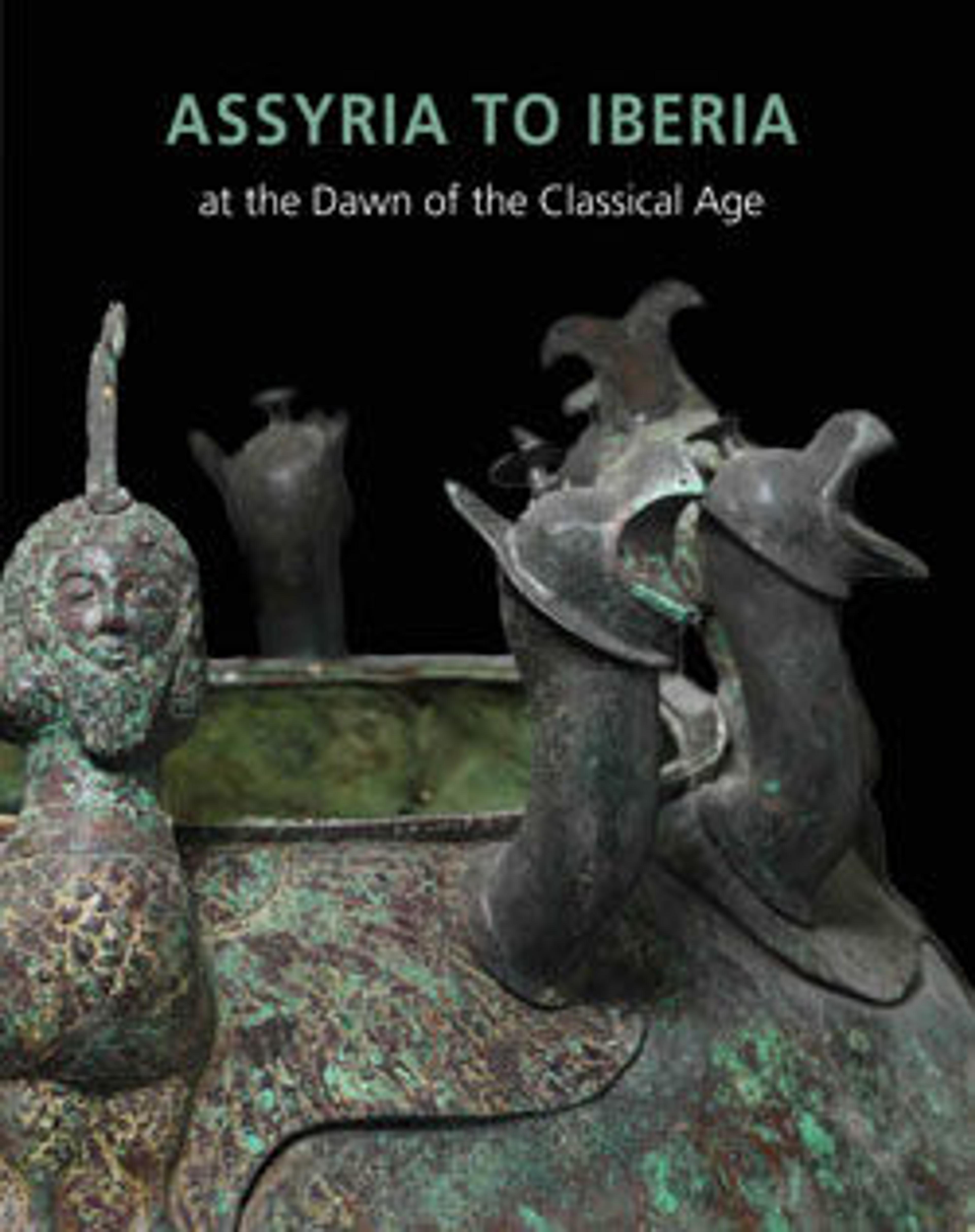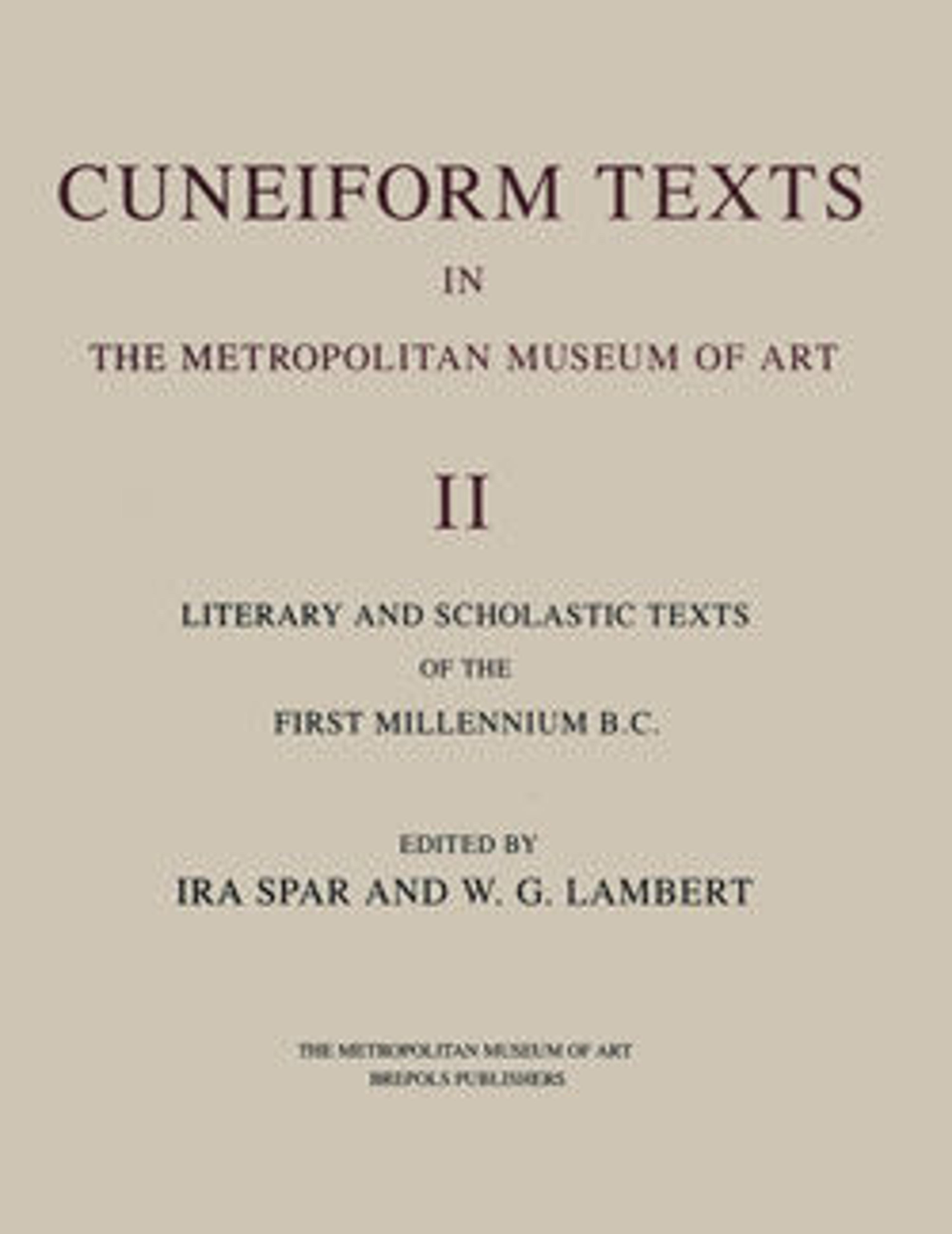
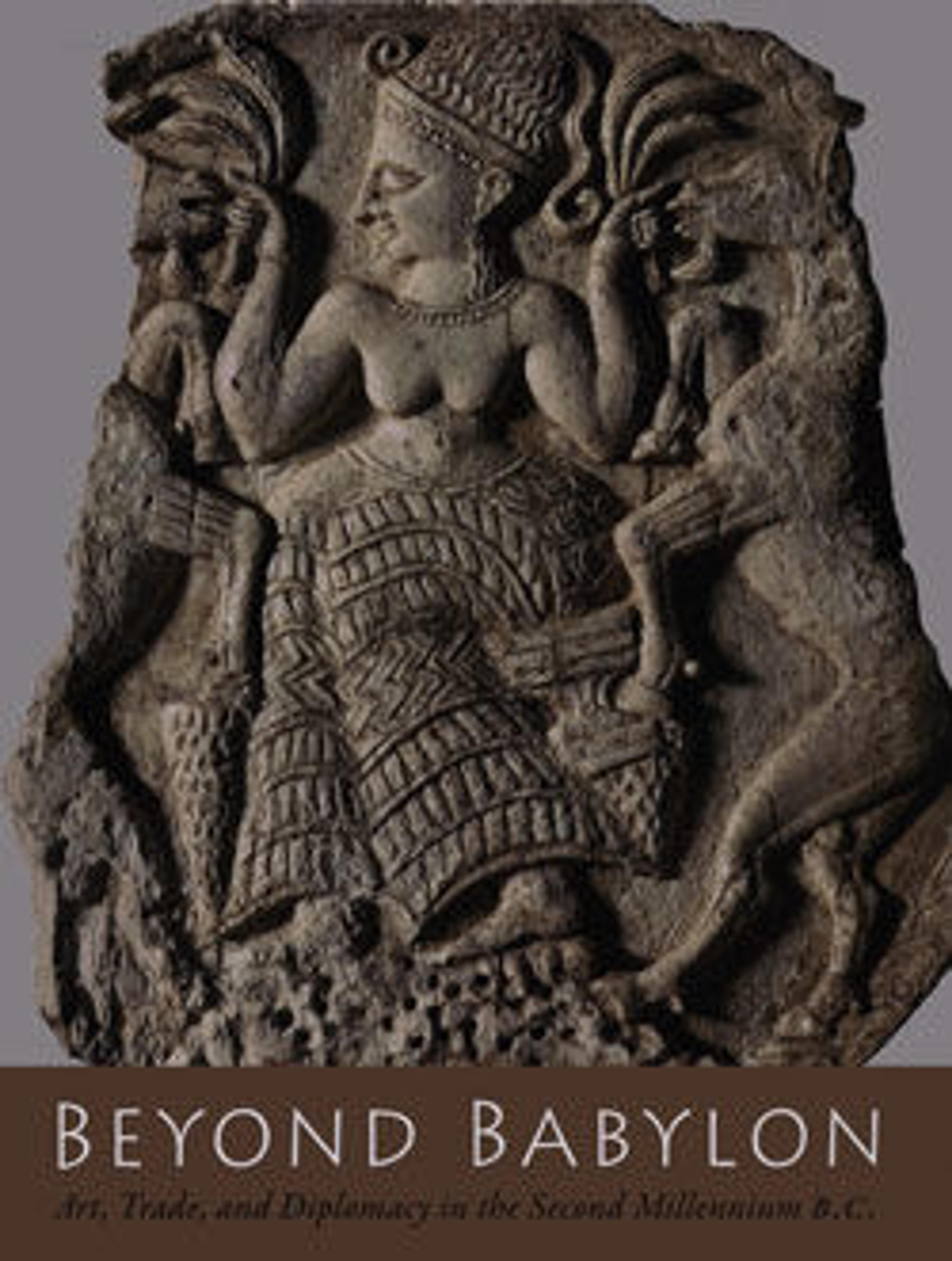
Beyond Babylon: Art, Trade, and Diplomacy in the Second Millennium B.C.
Beyond Babylon: Art, Trade, and Diplomacy in the Second Millennium B.C. brings into focus the cultural enrichment shared by civilizations from western Asia to Egypt and the Aegean more than three thousand years ago during the Middle Bronze and Late Bronze Ages. With the formation of powerful kingdoms and large territorial states, rising social elites created a demand for precious metals and objects fashioned in styles that reflected contacts with foreign lands. This quest for metals—copper, tin, silver, and gold—was the driving force that led to the establishment of merchant colonies and a vast trade network throughout central Anatolia, as well as to the emergence of a broad internationalism.
Exchange took the form of booty and tribute, trade and diplomatic gift-giving, creating the impetus for the circulation of precious goods, stimulating the sharing of ideas, and inspiring artistic creativity. Craftsmen traveled long distances, bearing local imagery to new lands, and the interaction of great states was expressed in new international styles. Commerce and diplomacy linked kings in Mesopotamia and Syria to Anatolia, the Mediterranean, and Egypt. This interaction is reflected in the magnificent jewelry from Ebla and in the extraordinary sculptures and wall paintings of rulers and divinities at the great palace of Mari. International exchange flowed through the port of Byblos on the Levantine coast, where temples housed votive objects and tombs contained treasures of Egyptian kings. Material wealth was carried into Egypt as well, as demonstrated by the fabulous hoard of silver vessels and seals in the Temple of Montu at Tôd. New discoveries include finds at Qatna, which yielded a royal palace and Aegean-style wall paintings, as well as royal archives and an intact tomb with rich grave goods that document interaction with the Near Eastern and Mediterranean worlds.
Perhaps the most dramatic evidence for these far-flung connections emerges not from exchanges realized but from tragedy—the wreckage of the oldest known seagoing ship, discovered off the cape of Uluburun, a treacherous stretch off the southern coast of Turkey. On view in the exhibition and described in detail in this catalogue are items onboard the ship, recovered from the seabed over years of extensive underwater excavation.
The languages, customs, and social practices that had to be mastered in the long-distance quest for resources and exotica are also explored. Modes of interaction—including immigration and mixed marriages, and involving merchants and diplomats, warriors and kings—are vividly captured in surviving texts, allowing a glimpse into the lives of profit-driven businessmen living abroad, distraught wives left at home, and princess-brides offered in exchange for gold.
Continuing the story begun in the landmark exhibition and its accompanying catalogue, Art of the First Cities: The Third Millennium B.C. from the Mediterranean to the Indus (2003), this important publication documents the innovative art that developed in the context of a sophisticated network of trade and diplomacy. The art and cultural history of the period are discussed by more than eighty-five scholars who, in their international scope, mirror the times they bring to life in wide-ranging essays and in catalogue entries on each of the objects included in the exhibition.
Met Art in Publication
You May Also Like
Press the down key to skip to the last item.
Citation
Aruz, Joan, Kim Benzel, and Jean M. Evans. 2008. Beyond Babylon: Art, Trade, and Diplomacy in the Second Millennium B.C. [Exhibition at the Metropolitan Museum of Art, New York, Nov. 18, 2008-Mar. 15, 2009]. New York New Haven: Metropolitan Museum of Art Yale University Press.
